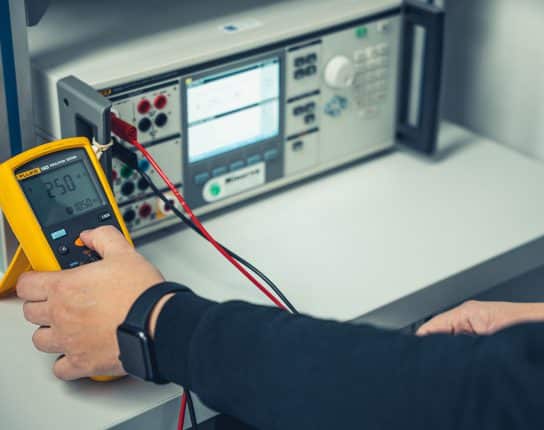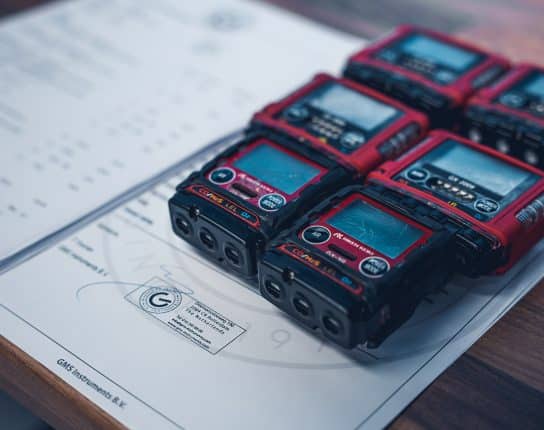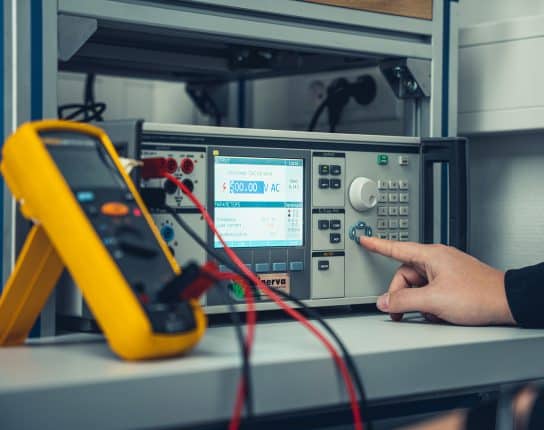
How does thermal imaging work?
If you’re a maritime professional, you’ve likely heard of thermal imaging. But do you know exactly how it works? Thermal imaging uses heat signatures to detect and measure the temperature of objects from a distance, allowing us to ‘see’ in complete darkness or through fog, rain or smoke. This incredibly useful tool has become increasingly important – so let’s dive into the details and uncover just how thermal imaging works!
How thermal imaging works and what it is used for
Thermal imaging is the use of an infrared imaging and measurement camera to ‘see’ and ‘measure’ thermal energy emitted from an object. Infrared allows us to see what our eyes can’t. Infrared thermography cameras produce invisible infrared or ‘heat’ radiation images and provide precise non-contact temperature measurement capabilities. Nearly everything gets hot before it fails, making infrared cameras extremely cost-effective, valuable diagnostic tools in many diverse applications. Thermal cameras for maritime applications can be used for predictive maintenance, condition monitoring, nighttime navigation, anti-piracy, iceberg navigation, oil spill detection, safety onboard and man-overboard situations.
The benefits of thermal imaging
Thermal imaging cameras are an essential tool in the maritime industry, helping to reduce the risk of dangerous accidents and fatalities by allowing thermal anomalies or structural defects to be quickly and easily detected. This is especially important when working in difficult conditions such as poor visibility during the night or day, inclement weather or confined spaces where vision may be restricted. Thermal imaging also helps to save costs, as thermal cameras can identify problems before they become too serious and require more expensive solutions like repairs, replacements or complete re-fits. Furthermore, thermal cameras can help increase safety by providing operators with heat signatures when monitoring hazardous gases or fires on board vessels; plus thermal cameras can detect thermal differences from sea surface temperature to aid with identification of incoming vessels or aid in search and rescue operations, including those at sea.
Some of the different types of thermal imagers
Thermal imaging technology is an incredibly useful tool for a variety of applications. Depending on the application, thermal imagers come in two different types: portable thermal imaging cameras and fixed thermal imaging cameras. The portable cameras are the type of cameras as suggested which can be hand-held and be deployed in many options. The development of portable cameras is fast, which makes cameras nowadays the size of a regular smartphone. They are often used in law enforcement or maritime search-and-rescue missions, as they allow for quick identification of thermal signatures from remote locations.
Fixed thermal imaging cameras are installed on a fixed location and can be monitored remotely. Stationary thermal imagers offer more detailed scanning of large areas, making them ideal for long-term security operations and data collection from weather satellites. Thermal imager technology is an invaluable tool which makes a wide range of activities safer and more efficient. This type of camera is, among other things, used in anti-piracy and iceberg navigation.
The right thermal imager for your needs
Thermal imaging technology is an incredibly useful tool for a wide variety of applications. By understanding how thermal cameras work and what they can be used for, you open up a world of possibilities for your business or project. If you think thermal imaging could benefit your organization, get in touch with one of our specialists who are more than happy to discuss your options further.
Related
More of the same



